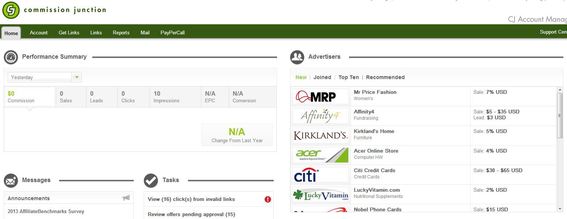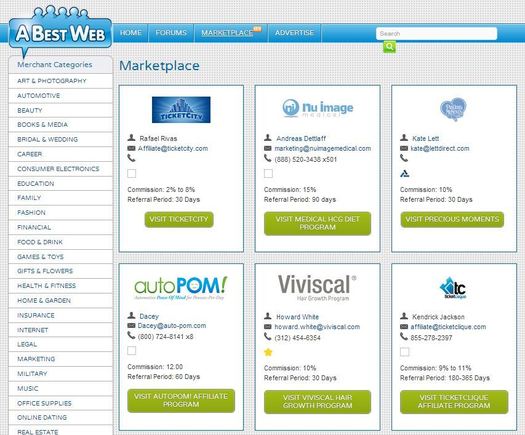Editor’s Note: This is “Part 3” of a three-part series on launching a new affiliate marketing program. “Part 1” and “Part 2” we published previously.
There are four steps involved in launching an affiliate program. They are: (a) evaluating potential affiliate networks and tracking platforms, (b) implementing and testing the tracking code, (c) developing your creative inventory, and (d) promoting your newly-launched program.
I discussed the first two steps in “Part 1” of this series. Then, in “Part 2,” I addressed creative inventory development, the third step, In this article, I will review best practices in promoting your new affiliate program.
Most affiliate networks list newly launched programs on the main page of the affiliate interface. For example, as an affiliate, when you first log in to Commission Junction, you’ll see a continually updated list of new advertisers on the right hand side. This placement is what typically drives the first influx of affiliate applications.

Most affiliate networks list newly launched programs on the main page of the affiliate interface.
Many networks also offer paid announcement opportunities, such as a dedicated email to all affiliates featuring your affiliate program, or ad banner placement within the affiliate platform. For example, if you launch your program on ShareASale, you can pay to advertise it via a banner on the affiliate home page, within the network directory, on the data feed page, and more.
Another best practice is to submit your program to various affiliate directories. Affiliate directories are searchable online directories that enable affiliates to locate relevant affiliate programs based on specific keywords or products. Affiliates use these directories because it is a lot more efficient to search a single resource, than to conduct the same search multiple times on multiple networks. Free listings can be had at sites such as AffiliatesDirectory.com, AffiliateFirst.com, and AffiliateRanker.com, an online affiliate marketing forum that has been around since 2001, charges a fee to be a part of its program directory. However, because affiliates visit the site to participate in discussions on the forum, you stand a greater chance of reaching the right target audience.
Also on A Best Web is a paid option that enables you to announce your program within its forums. I’ve often found this to be an effective placement because the forum format facilitates two-way discussion by enabling affiliates to post questions and comments, and allowing affiliate managers the opportunity to respond to those posts. Such conversation creates a more engaged relationship, which should benefit the affiliate manager in the long run.

A Best Web is a paid affiliate option that lets you announce your program on forums.
Another practice to consider is reaching out to your best customers and inviting them to join your affiliate program. They may not have websites or search marketing expertise as an experienced affiliate might, but they almost certainly have social reach and influence. By inviting your customers to join your affiliate program, you’re incentivizing them to promote your products to their audience via social media channels like Facebook, Twitter, and Pinterest. Many customers are receptive to the idea of earning commissions on purchases made by their friends or family. You may have to walk them through your affiliate application process and teach them how to build tracking links, both of which can be done either via webinars or even short online video walkthroughs. However you’ll likely discover that by converting a loyal customer into an incentivized brand advocate, you’ve amplified her voice.
It is important to note that before you start approving the initial wave of affiliates, be sure to have a strong welcome letter in place. This is the auto-responder email that is sent to affiliates when their application is approved. A good affiliate welcome letter will include a review of your commission structure, affiliate manager contact information, and banners and code to encourage the affiliate to get starting with marketing activities immediately.
Finally, when you launch your program, be sure to review pending affiliate applications multiple times a day. You’ll certainly see a hefty influx of applications within the first few days of launch, and the faster you approve affiliates, the faster they’ll get your links up on their sites and the faster you’ll see traffic. Remember, however, it is common to see a lot of coupon sites in the beginning. This is because it is very easy for coupon sites to put your links on their sites. For the most part, all they need is a logo and a tracking link. You should still aim toward a balanced affiliate base of coupon sites, content and blog affiliates, search engine marketers, shopping sites, and mobile marketers. However, keep in mind that it takes non-coupon affiliates more time to integrate your links into their campaigns and sites.



